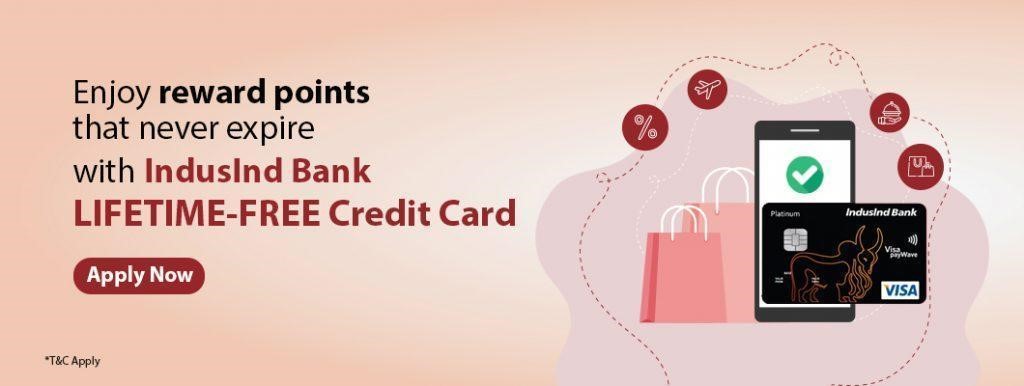
Credit Card Interest Rates Explained: What They Are and What Affects Them
Posted on Tuesday, November 7th, 2023 | By IndusInd Bank
Summary: Credit cards are excellent tools for financing out-of-pocket expenses without feeling the initial cost burden. However, late or missed payments attract interest based on APRs set by the bank unless serviced within the interest-free period. It’s important to understand how these interest calculations work, their types, and the factors that affect them to plan your expenses and make financially viable decisions.
From financial flexibility to lifestyle-enabling rewards, credit cards have plenty to offer to the savvy modern consumer. Undoubtedly, credit cards are excellent tools for financing out-of-pocket expenses without feeling the initial cost burden. However, to explore the full range of benefits of the plastic money in your wallet, you must understand how your card’s interest payments work.
Ideally, you must pay your bills before the beginning of the next cycle. At times, however, you may be unable to do so owing to a big-ticket purchase or a financial emergency. In such an event, you are charged an interest based on your Annual Percentage Rate APR.
Such scenarios could potentially signal the onset of a debt spiral. To avert this, it is essential to monitor your outstanding balances and plan your repayments carefully. Understanding credit card interest rates is essential to manage your financial life.
Credit Card Interest and APR: What’s the difference?

Simply put, credit card interest is the price you pay for borrowing money from your bank. However, the interest only applies if you are unable to close your balance before the due date. This is also referred to as the finance charge. When the interest rate is stated on an annual basis rather than monthly, it is known as the credit card Annual Percentage Rate APR. Although APR works as an annual rate, credit card issuers use it month-wise to calculate the interest accrued.
Types of APR
Credit cards come with various associated Annual Percentage Rates APRs, which impact the cost of borrowing. Here are five common types of APRs:
1. Purchase APR
Purchase APR is the interest rate you pay on new purchases made with your card. You can bypass this with the grace period issuers offer on new purchases, but only if you clear your balance in full and on time. The grace period is the period between the end of a billing cycle and the due date of your bill. If you miss a payment, the grace period is forfeited until the balance is cleared.
2. Introductory APR
Many credit cards come with a temporary low or 0% introductory APR on purchases or balance transfers, with promotions lasting for a few weeks or months. Once the promotional period concludes, any remaining balance on the card will begin accruing interest at the standard APR.
3. Balance Transfer APR
A balance Transfer APR applies to credit balances transferred from one card to another. But unlike new purchases, balance transfers do not usually get a grace period.
4. Cash Advance APR
Cash advance APRs are applied when you borrow cash from your credit card. These are set APRs that are generally higher than both purchase and balance transfer APRs. More importantly, this interest is accrued from the transaction date without any grace period.
5. Penalty APR
Penalty APRs are usually the highest credit card interest rates charged. Banks typically impose this when the payment is more than 60 days late. Once triggered, the APR remains in effect for upto 6 months. This also has a negative impact on your credit score.
Factors that Affect Credit Card Interest Rates
Your credit card APRs can change based on various factors. So, if you have noticed that your APRs have shown a sudden increase, the following may be some reasons:
- Missed Payments: Missing monthly credit card payments not only attracts late fees but also a penalty APR that can increase your overall interest liability. You can get rid of the penalty APR by making timely payments.
- End of promotional period: If you notice a sudden increase in your APR, it might also mean that your introductory APR offer has run out. When this happens, banks apply their regular APRs, which will factor into your pending balances.
- Drop in credit score: If your CIBIL score decreases, your card issuer might perceive you as a credit risk and, consequently, raise the credit card interest rates.
How to Avoid Paying Credit Card Interest
You can avoid interest on your credit cards altogether if you use them responsibly. Here are some tips:
- Pay your credit card bill in full: Banks provide a 20 to 50 day grace period between the purchase date and the due date. If you pay off the balance in full in this time interval and do not have any outstanding cash advances, you will not be charged any interest.
- Pay at least the minimum: If full payment is not an option, you can pay the minimum due amount, usually around 5% of the outstanding balance, to reduce the overall liability and avoid late fees and penalty.
Apply Online for IndusInd Bank Credit Cards
Before you sign up for a credit card, read the fine print to understand the interest charged by your bank.
IndusInd Bank offers an assortment of feature-rich credit cards to help you lead the lifestyle you deserve. Enjoy unbeatable reward plans, exclusive offers on top brands, and a 3-step paperless application process.
Apply for a credit card online today at IndusInd Bank and get instant approvals.
Disclaimer: The information provided in this article is generic in nature and for informational purposes only. It is not a substitute for specific advice in your own circumstances. Hence, you are advised to consult your financial advisor before making any financial decision. IndusInd Bank Limited (IBL) does not influence the views of the author in any way. IBL and the author shall not be responsible for any direct/indirect loss or liability incurred by the reader for taking any financial decisions based on the contents and information.



 Offers
Offers Rates
Rates Debit Card Related
Debit Card Related Credit Card Related
Credit Card Related Manage Mandate(s)
Manage Mandate(s) Get Mini Statement
Get Mini Statement
 categories
categories Bloggers
Bloggers Blog collection
Blog collection Press Release
Press Release


